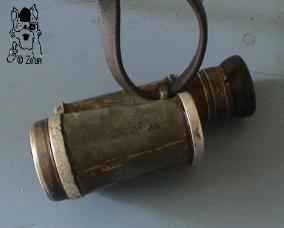
Dienstglas 6x30 Ddx Serial Numbers
There is also a number printed on the right side, but I suppose it's a military serial number, or parts number. These binos are not dust- and waterproof the way modern binos are, and they don't have any antireflective coating. Otherwise, the ergonomics are great, and they are fairly lightweight, robust and reliable.
'You can find many posts referring to tan binoculars on Wehrmacht-Awards.com.' - As I recall there was quite a good discussion about this on WA a few years ago with several esteemed members of this forum contributing. Of particular interest was a picture seemingly (based on uniforms etc.) taken in Tunisia of some German troops one of whom has a light colored (tan?) binocular, but the binocular is entirely light colored including eyecups suggesting it was field camouflaged and not painted that way at the factory. This post also raises the topic of eBay myths and misconceptions. DAK tan colored 6x30 binoculars has to be one of the most prevalent but some of my other favorites are: 1) the D.F. 10x80 was used as a tank or submarine binocular (makes perfectly good sense because it can't be hand carried and used, right?); 2) the often red colored dry air ports on British WW II binoculars (usually No. 5's) and REL 7x50's are for nitrogen purging (this does make sense unless you research the matter); 3) the M marking when seen on Dienstglas binoculars denoting 'Metrisches' i.e.
Metric threading of screws means Marine and the binocular is a WW II Kriegsmarine one (this was also thoroughly covered in a discussion on WA a while back with the owner of the M marked binocular insisting to the bitter end in spite of well reasoned explanations to the contrary that he possessed a KM bino); 4) the olive colored U.S. Army Bell & Howell M19 7x50 was used in the Vietnam War (generally not true because the binocular did not go into production until the mid-1970's although it's possible some prototypes were field tested in the war. I have yet to see any photographs of this binocular in service there). Tan coloured 6x30's were photographed in use by German paras in Tunisia towards the end of the war in North Africa but they're regarded as being hand painted. Nice set to get though Greg. If the relative didn't put a premium on the story, it's likely the original history has become garbled over time.
The soldier could have been in Tobruk, been captured and served out the war in an Italian prisoner of war camp and then, when released, swapped cigarettes for them. I find that relatives tend to be fairly honest. Another flaw in the story is that they were able to send stuff home from the Tobruk siege. The Royal Navy struggled to keep them supplied and the chance of souvenirs being sent back is pretty slim - letters maybe. British and Commonwealth troops weren't encouraged (like the US) to collect souvenirs - it tends to be smaller items that could be carried in a kit bag that came back. Hi Niall and Rodolfo, Thanks for the comments and I have to agree with you on your theory Niall and no I didn't pay a premium for the story or the colour of the paint. Amazingly these sat on a local website for weeks at $175 AUD case not included and no one seemed to spot them so I waited awhile and offered him $100 and he took it I was quite surprised and with only local postage they were quite cheap.
I find it odd that they have no ranging scale in the right reticle. @ Rodolfo, I can't say I've ever seen a tan set of 6x30s made by Zeiss as you say they always seem to be either ddx or cag produced examples and of course DAK used.
Sorry Winfried, may be I don't understand. So then we know that the glass was made prior or in 1917 IF it is an original Zeiss bino. For exemple the Silvamar 6x30 (inter-war production) has three screw, as well as the dienstglas type h / 6400.. (see Images) If it is. The glasses you have shown are exceptions. But in 1917 there was a design change with regards to the screws fixing the plates.

If there are screws holding the washer then we definitely talk about a post WW I binocular. The design of the oculars supports this hypothesis as well.
The three screws are not in contradiction to it. ASSUMING it was a WW I bino then I would have guessed it is of civilian nature as it is lacking the clamping wheel. So in summary: From the design it really could be Zeiss original built after WW I. Big questions for me personally are: - Why would Zeiss make such a bino after the war when 8times magnification became more and more common? A trial version? - Why the strange inscription on the right plate?
Latihan Soal Olimpiade Biologi SMP Tingkat Kota/Provinsi. Bahkan berprestasi dengan meraih medali terdiri dari 2 emas, 3 perak dan 6 perunggu pada IJSO ke 11 di Argentina pada tahun 2014. Prestasi untuk bidang Matematika juga berhasil diraih pada International Mathematics Competition (IMC), National Geography World Championship (NGWC) dan International Astronomy Olympiad (IAO). Soal olimpiade biologi sma tingkat provinsi bengkulu. Dalam Olimpiade Biologi, hafal materi saja tidak dapat menjamin Anda akan menang karena daya analisis dan praktik pun menjadi penilaian tim juri (Tahap praktikum dilaksanakan pada tahap Olimpiade Sains tingkat nasional). Kali ini ane akan ngasih Kumpulan soal-soal OSN Biologi SMA. Baiklah berikut adalah soal dan pembahasan lengkap olimpiade nasional SMA MA cabang biologi dari yang paling baru sampai paling lama. Silakan teman-teman request jika berkasnya tidak ada, saling mengingatkan.